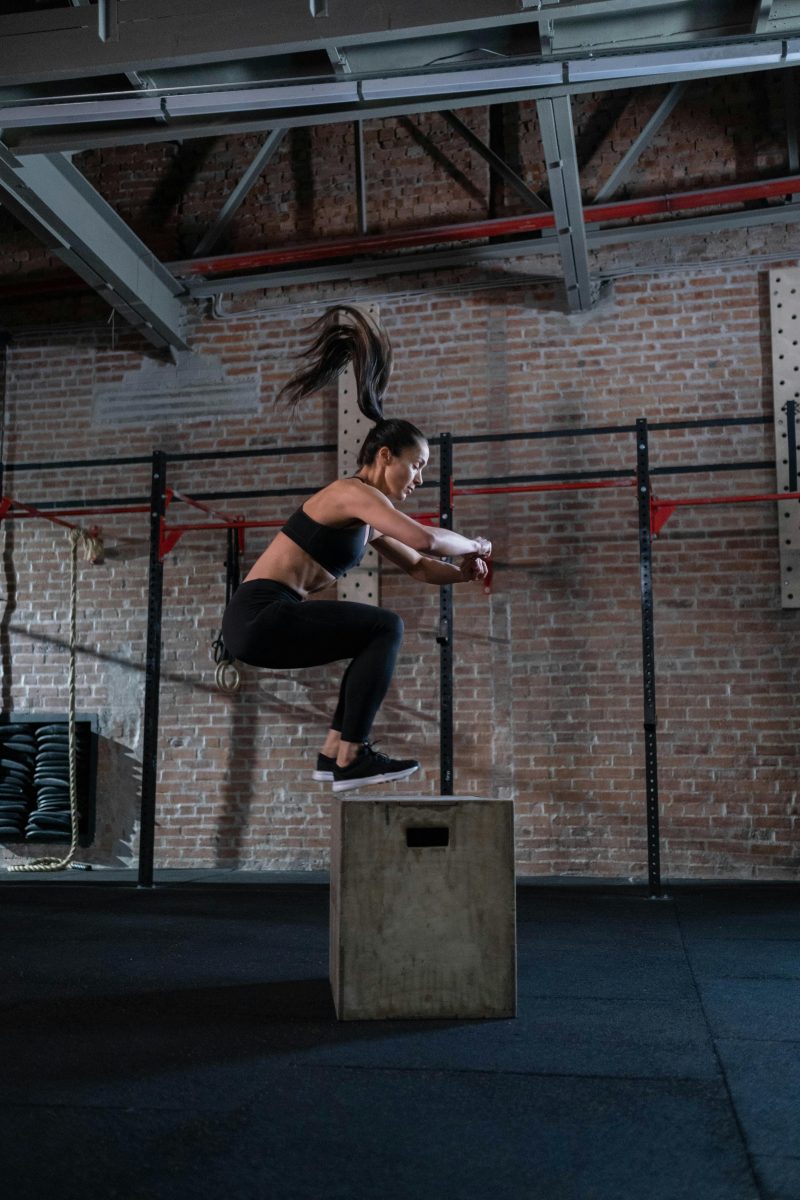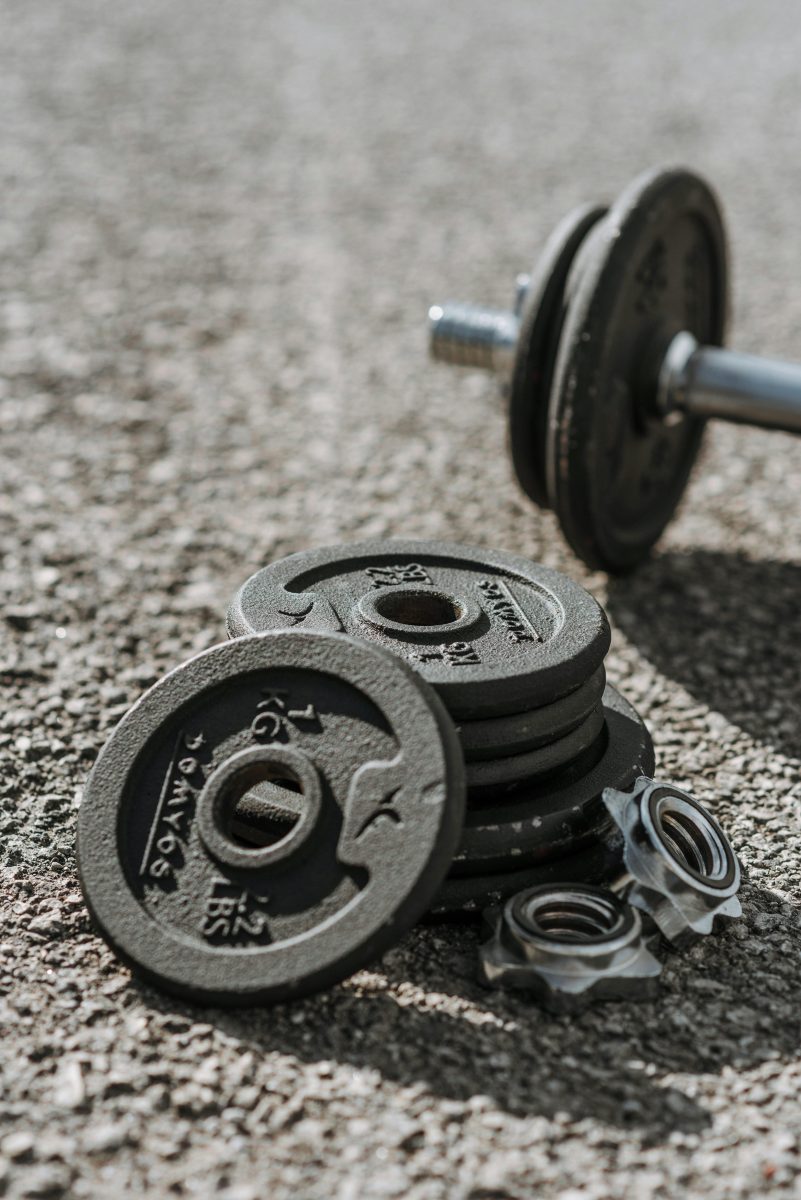Last Updated on: 14th July 2024, 09:04 am
Introduction to Plyometric Training

Plyometric exercises, often termed “jump training” or “plyos,” involve explosive movements designed to increase strength and speed. These exercises stretch the muscles, then contract them quickly, using the stretch-shortening cycle to enhance muscle power. Plyometrics has evolved from simple jumping exercises developed in the 1960s to a comprehensive training method embraced by athletes worldwide.
- The science behind plyometrics reveals its profound impact on muscle performance.
- By engaging the body’s fast-twitch muscle fibers, these exercises improve muscular power and explosiveness, essential for peak athletic performance.
- This method not only enhances muscle efficiency but also significantly boosts endurance, agility, and overall physical resilience.
Understanding the historical context and evolution of plyometric training illuminates its significance in sports and fitness. Initially utilized by Soviet athletes to dominate international competitions, plyometrics has become a cornerstone in athletic training programs, demonstrating its effectiveness in pushing the boundaries of human performance.
The Role of Plyometrics in Athletic Performance

Plyometrics play a pivotal role in enhancing athletic prowess. By focusing on explosive movements, these exercises significantly boost speed and power. Athletes across various sports have experienced remarkable improvements, making plyometrics a key component in training regimens.
- One of the primary benefits of plyometric training is its ability to improve agility and coordination.
- The dynamic nature of plyometric exercises challenges the body in unique ways, fostering better athletic execution.
- Success stories abound in the world of sports, where plyometrics have been a game-changer.
By incorporating plyometrics into their training, athletes can unlock new levels of performance. Whether it’s sprinting faster, jumping higher, or moving more agilely, the benefits are undeniable. Plyometrics offer a proven path to achieving athletic excellence.
Key Plyometric Exercises and Their Benefits

Lower Body Plyometrics
- Squat jumps, box jumps, and lunge jumps are foundational exercises that target the lower body.
- These movements enhance explosive power, crucial for sprinting, jumping, and rapid direction changes.
- By engaging the major leg muscles, athletes can see significant improvements in speed and vertical leap.
Upper Body Plyometrics
- Plyo push-ups and medicine ball throws focus on the upper body, increasing arm strength and power.
- These exercises are vital for sports requiring upper body explosiveness, such as swimming, baseball, and volleyball.
- The dynamic nature of these movements also improves muscular endurance and coordination.
Core Plyometrics
- Plyometric planks and ball slams target the core, an essential component for overall athletic performance.
- A strong, reactive core enhances balance, stability, and power transfer between the upper and lower body.
- These exercises contribute to a more efficient and powerful athletic movement.
Each plyometric exercise plays a crucial role in developing an athlete’s performance. Lower body exercises build the foundation for explosive speed and power. Upper body plyometrics enhance strength and endurance where it’s most needed. Core exercises tie everything together, ensuring athletes can perform at their peak with balance and stability. Together, these exercises create a well-rounded athlete capable of achieving new heights in their sport.
Integrating plyometric training into an athlete’s routine can lead to remarkable improvements in agility, coordination, and overall athletic execution. The dynamic and explosive nature of these exercises challenges the body in unique ways, fostering better performance and resilience in competition. For athletes aiming to elevate their game, plyometrics offer a proven path to success.
Designing a Plyometric Training Program

Creating an effective plyometric training program begins with assessing fitness levels and setting realistic goals. This foundational step ensures that the exercises selected are both challenging and achievable, paving the way for measurable improvements in athletic performance.
- Key to the success of any plyometric regimen is the balance between intensity, volume, and recovery.
- Intensity refers to the difficulty of the exercises, volume to the number of repetitions and sets, and recovery to the rest periods between sessions.
- A well-designed program carefully calibrates these elements, ensuring athletes push their limits without risking overtraining or injury.
Incorporating plyometrics into an existing training regimen requires thoughtful integration. These explosive exercises should complement, not replace, other training elements. By weaving plyometrics into the fabric of an athlete’s routine, one can enhance overall performance without compromising the benefits gained from other forms of exercise.
Safety considerations and injury prevention are paramount. Proper technique is crucial to avoid strain, and exercises should be selected and adjusted based on the athlete’s current fitness level and injury history. Emphasizing form over volume or intensity can significantly reduce the risk of injury, making the training both effective and sustainable.
By adhering to these principles, athletes and coaches can harness the power of plyometric training to achieve new levels of athletic performance. The dynamic and explosive nature of these exercises makes them a valuable tool for anyone looking to enhance their speed, power, and agility.
Nutrition and Recovery in Plyometric Training

Nutrition plays a pivotal role in supporting high-intensity plyometric training. A balanced diet rich in carbohydrates, proteins, and healthy fats fuels the body, providing the energy needed for explosive movements. Carbohydrates are particularly crucial, as they replenish glycogen stores, while proteins aid in muscle repair and growth. Incorporating a variety of nutrients ensures the body has the resources to perform and recover.
Hydration cannot be overstated in its importance. Intense workouts demand optimal hydration to maintain performance and prevent fatigue. Electrolyte balance, crucial for muscle function and fluid balance, is maintained through adequate fluid intake. Sports drinks can be beneficial during extended sessions, replenishing lost salts and minerals alongside hydration.
Recovery techniques are essential for maximizing the benefits of plyometric training. Active recovery, such as light jogging or cycling, helps flush out lactic acid, reducing muscle soreness. Stretching improves flexibility and aids in the prevention of injuries, making it a critical post-workout activity. Rest days are equally important; they allow the body to repair and strengthen, preparing it for the next training session. By integrating these recovery strategies, athletes can enhance their performance, reduce the risk of injury, and ensure longevity in their sports careers.
Together, these nutritional and recovery strategies form a comprehensive approach to supporting plyometric training. By fueling the body correctly, maintaining hydration and electrolyte balance, and prioritizing recovery, athletes can optimize their performance and achieve remarkable results.
Measuring Progress and Adjusting Your Training

Tracking performance improvements is essential in plyometric training. Athletes often use tools like:
- Vertical jump tests
- Sprint times
- Force platforms
Metrics such as jump height and ground contact time provide concrete data, helping to tailor training for maximum efficiency.
However, progress isn’t just about numbers. It’s crucial to listen to your body. Signs of overtraining, including:
- Persistent fatigue
- Decreased performance
- Increased incidence of injuries
necessitate an immediate adjustment to your program. Scaling back intensity or incorporating more rest days can help prevent burnout and promote long-term success.
As gains become evident, it’s time to evolve your routine. Increasing intensity or adding variety with new exercises ensures continuous improvement. This might mean:
- Incorporating more complex movements
- Increasing the resistance used during plyometric drills
Such changes keep the body challenged and the mind engaged, driving you towards new peaks of athletic performance.
Remember, the key to advancement lies in the delicate balance of pushing limits and prioritizing recovery. By meticulously measuring progress and responding to your body’s cues, you can adjust your training for sustainable growth and exceptional performance.
In Closing
Plyometrics unlock athletic excellence. This training bridges strength and agility, fostering unparalleled performance. Through the dynamic balance of explosive exercises and recovery, athletes craft a foundation for enduring success. Embracing plyometric training promises a journey of growth, resilience, and peak achievement. Let this be your call to leap beyond limits and redefine potential.
Enhancing Athletic Performance with Plyometric Training FAQs
Beginners can start with plyometric training, but they should begin with low-intensity exercises and gradually progress to more challenging ones. Starting with basic movements helps build the necessary strength and coordination. It’s also important for beginners to focus on proper form to prevent injuries and ensure the effectiveness of the exercises.
Yes, plyometric training can reduce the risk of injury by improving joint stability and muscle coordination. By enhancing the neuromuscular system’s responsiveness, athletes can better control their movements, especially during high-intensity activities. However, it’s crucial to perform these exercises with proper form and gradually increase intensity to maximize safety and effectiveness.
Plyometric training can contribute to muscle growth by creating micro-tears in the muscle fibers, which then repair and grow stronger. This process, combined with the increased neuromuscular demand of plyometric exercises, leads to improvements in muscle size and power. However, for optimal muscle growth, plyometric training should be complemented with traditional strength training exercises.
Plyometric training improves speed by increasing the rate of force development in the muscles. This is achieved through exercises that stimulate the stretch-shortening cycle, enhancing the muscles’ ability to contract more quickly and powerfully. As a result, athletes can achieve faster movements and improved acceleration.
Athletes should incorporate plyometric exercises into their training routine 2-3 times per week, allowing for adequate recovery between sessions. This frequency ensures the muscles have time to adapt and strengthen, reducing the risk of injury. It’s important to balance plyometric training with other forms of exercise to promote overall athletic development.
Plyometric training is beneficial for most athletes, but it may not be suitable for everyone, especially those with existing injuries or limited physical conditioning. It’s important for athletes to have a solid foundation of strength and flexibility before incorporating high-intensity plyometric exercises. Consulting with a fitness professional can help determine the appropriateness of plyometric training for individual athletes.
Examples of plyometric exercises include jump squats, box jumps, lunge jumps, and plyometric push-ups. These exercises focus on rapid muscle lengthening followed by a forceful contraction, mimicking the demands of many sports activities. Incorporating a variety of plyometric exercises can target different muscle groups and improve overall athletic performance.
Plyometric training involves explosive exercises that increase power, speed, and muscle strength. It improves athletic performance by enhancing the ability of muscles to generate force quickly. This type of training is beneficial for athletes across various sports, as it directly translates to improved performance in activities requiring speed and power.
The best way to incorporate plyometric training into an existing workout routine is to integrate it on strength training days or as a separate session focused on power development. It’s important to allow for adequate recovery between plyometric sessions to prevent overtraining and injury. Tailoring the intensity and volume of plyometric exercises to the athlete’s current fitness level and goals will maximize the benefits of this training method.
In endurance sports, plyometric training enhances performance by improving running economy and muscle efficiency. By training the muscles to produce force more effectively, athletes can maintain higher speeds for longer periods. This type of training also contributes to better fatigue resistance, which is crucial in endurance events.
Orlando is a all round athlete from Australia, now resident in Germany. His sports of passion of American Football(Offensive line), weight training and indoor rock climbing where he uses his 195cm wing span to his advantage.



